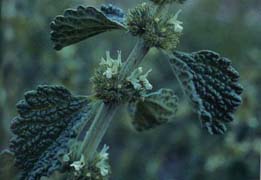California Poppy Family Name: Papaveraceae Latin Name: Common Names: Mexican poppy, Gold poppy, flame flower, cup of gold,California poppy; golden poppy, nightcap
Family Name: English
Eschscholzia californica
Related species: Glaucium flavum (horned poppy), Stylomecon heterophylla(wind poppy), Papaver somniferum (opium poppy, breadseed poppy)
Body System Affiliations:
1. Nervous System
2. Maternal Care
3. Skin
4. Hair Care
5. First aid
Botanical Description:
Habit: annual (1: 314)
Size: up to two feet tall, usually less than one though (1:314, 8:110)
Arrangement: mostly basal (1:314)
Leaves: long divided into narrow segments on long stalkswith alternately branching blue-green or grayish green foliage. The leaves are divided into round, lobed segments. They are numerous, much divided and parsley like (Drawn from
Flowers: The flowers are solitary on long stems, with four wide fan-shaped petals (usually), silky-textured, each petal 2-6 cm long and broad; their color ranges from yellow to orange, and flowering is from February to September. Many stamens and flowers close at night.(Drawn from 1:314,2:online,3:online,4:online,5:online,6:online, 7:mom, 8: 110)
flowers can also be white to red (3: online)
Fruit: The fruit is a slender linear pod like capsule 3-4 in long, which splits in two to release the numerous small black or dark brown seeds (1:314)
Underground Parts: Taproot (8: 110)
Personal Observation and Description: This beautiful flower is very soft, almost fuzzy.
Ecology:
Habitat: Prefers a poor sandy soil and succeeds in a hot dry position.
Roadsides, clearings, dry rocky slopes at low elevations, also widely cultivated all over (1:314,5:online)
Range: "from southeastern Vancouver Island and the Gulf Islands south to California." (1:314) California, Oregon, Nevada, and Arizona(8:110)
Native Where: California
Oregon, Nevada, and Arizona(8:110)Personal Observation of Locations Observed, Dates and Description of Plants:
My mom used to grow poppies in her garden in Eatonville, Washington. The California poppies always seemed out of place to me, so bright compared to the others.
Western (European-American) Uses/Relationships:
Food: The seeds are used in cooking. (7:mom)
Materials/Technology: Spanish Californians boiled the leaves with olive oil and added perfume to make a hair dressing. (7: mom )
Part Used: Dried Aerial portions or whole plant when flowering
Medicinal Actions: antimicrobial, nervine, sedative,
analgesic, Anodyne; Antispasmodic; Diaphoretic; Diuretic; Galactofuge; Odontalgic; Mild Narcotic; Hypnotic; Sedative
Indications:Colic pains; gall-bladder colic pain; toothaches; sores; ulcers; thin dull hair; nervous tension; anxiety; insomnia; incontinence (especially in children); bedwetting; lactating breasts(Drawn from 1:314,2:online,3:online,4:online,5:online,6:online, 7:mom, 8: 110)
Body System Associations: Nervous System, First Aid, Skin, Hair Care, Maternal Care Constituents: Flavone glycosides and Alkaloids such as protopine, crytptopine, and chelidonine similar to Opium Poppy.
Applications: Infusion, Tincture, Poultice.
Preparation/Pharmacy: Infusion: pour a cup of boiling water onto 1-2 teaspoonfuls of the dried herb and leave to infuse for 10 minutes. A cup should be drunk at night to promote restful sleep.(7:mom) Long-term use is acceptable, as the plant is generally not considered habit forming. Don't use if you're pregnant or breast feeding. May be slightly dangerous if given to children or senior citizens or taken in large quantities. Otherwise, no adverse effects noted. Do not take with prescription medications. Do not take with prescription medications. To some sensitive individuals the plant can exhibit very subtle euphoric properties. (1,2,3,4,5,6) REPEAT ABOVE AS NECESSARY FOR VARIOUS PLANT PARTS Indigenous and Non-Western Use/Significance/Relationships: ***
Food: The seeds are used in cooking.(7:mom)
Materials/Technology: California Poppies were used midicinally by Native Americans, and the pollen was used cosmetically. (5:online)
Part Used: poppy leaves
Medicinal Actions: Pain killer
Harvest: The whole plant is harvested when in flower and dried. 8:110)
Propagation:
Technique: Seed, sow in a sunny border outdoors and only just cover the seed. The seeds should be sown where the plants are to stand, as they don't transplant well. The plants like a sunny exposure and do well on hillsides and dry, rocky places. In the garden, the seedlings should be thinned so that the plants will stand 6 to 8 inches apart.
Timing: Mid spring or late summer to early autumn. The seed usually germinates in 2 - 3 weeks. Colder temperatures might want to provide protection for roots in winter if sown late. (7:mom, 4:online, 5:online)
Personal Experience:none
Harvest:
Plant Part: When California poppy is fully mature having both flowers and seed capsules, pull the whole plant from the ground, tap root and all, remove dead basal leaves (2;online,8:110))
California poppy flowering tops are harvested in the peak of summer. The outer leaves may be picked and dried at any time. (3:online,6:online)
Season of Harvest: in the peak of summer(Drawn from 1:314,2:online,3:online,4:online,5:online,6:online, 7:mom, 8: 110)
Method of Harvest: dry in a paper bag (Drawn from 1:314,2:online,3:online,4:online,5:online,6:online, 7:mom, 8: 110)
Cultural Considerations of Harvest: James Green recommends harvesting on or near a full moon. (55 )
Personal Experience: little
Procurement: I could not get access to my plant the California Poppy
Other Procurement Information : none found
Application/Preparation/Pharmacy: I did make teas with other plants that affect the nervous system.
Experience: none yet
Other Notes of Interest: California Poppy is California’s state flower
Cautions: Long-term use is acceptable, as the plant is generally not considered habit forming. Don't use if you're pregnant or breast feeding. May be slightly dangerous if given to children or senior citizens or taken in large quantities. Otherwise, no adverse effects noted. Do not take with prescription medications. Do not take with prescription medications. To some sensitive individuals the plant can exhibit very subtle euphoric properties
Drawings, Photographs or Pressings [on separate pages]:
References Cited:
2. Moerman, Daniel E. Native American Ethnobotany Database. Aug 1999. Online at http://www.umd.umich.edu/cgi-bin/herb/ [1]. Visited 3-9-2001.
3. Author Unknown. Plants for a future website/database. Online at http://www.pfaf.org/database/plants.php?Eschscholzia+californica [2] Visited 2-14-07
4. Author Unknown. Erowid online at www.erowid.org [3] Visited 2-15-07
5. Author Unknown. Holistic-Online herb information at www.holisticonline.com [4] Visited 2-14-07
6. Author Unknown. Wikipedia information at www.wikipedia.com [5] visited 2-14-07
7. Candy Taylor, my mother, 2/12/07
8. Moore, Michael. Medicinal Plants of the Pacific West.Sante Fe, NM:Red Crane Books,1993
Name - Program - Quarter - Year
Brandi Stone- Healing Gardens - Winter 2007
